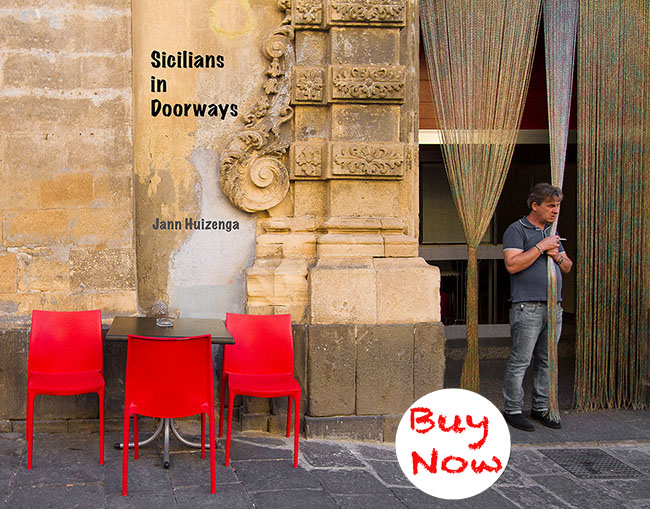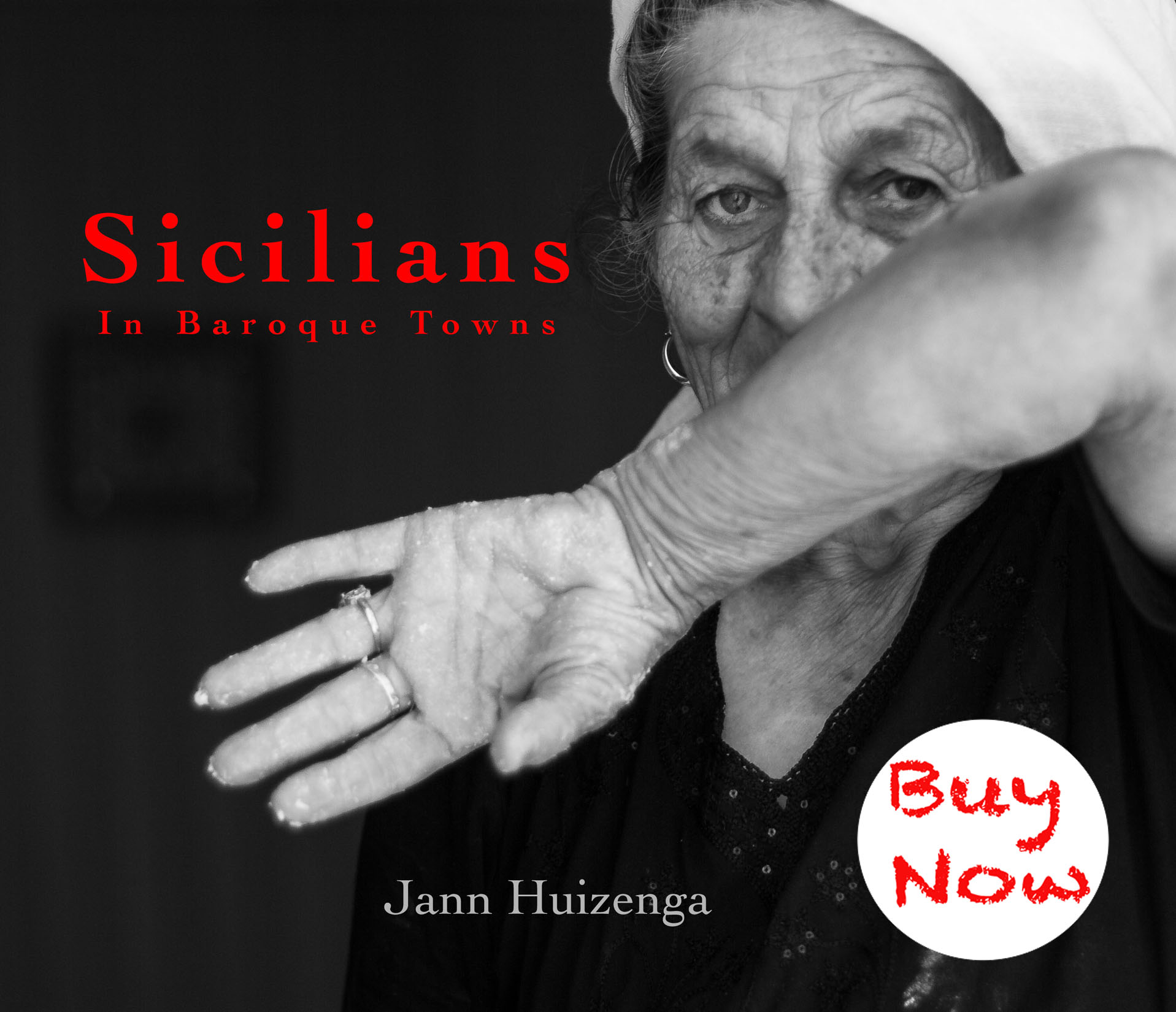June 15, 2010
We make up a long list—masking tape, towel racks, electric drill, olive tree, hooks—and drive through the scabby detritus of Upper Ragusa’s industrial zone to Brico, a do-it-yourself Sicilian version of Home Depot.
The smell of the sea fills our nostrils as we pull into the blazing parking lot. I don’t approve of big-box stores or the mall-ification of Sicily, but my hardware-hungry husband has landed on the island, we have a rental car, and I’m a hypocrite.
Kim tries to get in the exit doors, but they remain stubbornly shut.
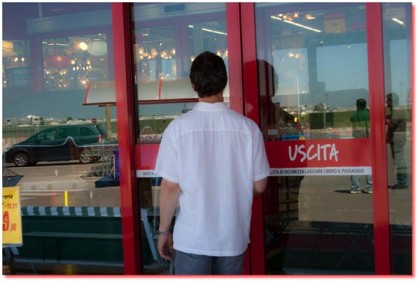 We finally escape the hot fingers of the sun into cool Brico-dom. Kim marvels at the dainty shopping baskets, wondering where all the flatbed carts are. We finally escape the hot fingers of the sun into cool Brico-dom. Kim marvels at the dainty shopping baskets, wondering where all the flatbed carts are.

We’re a little frustrated that we can’t decode what’s in all the pots and the tubes.
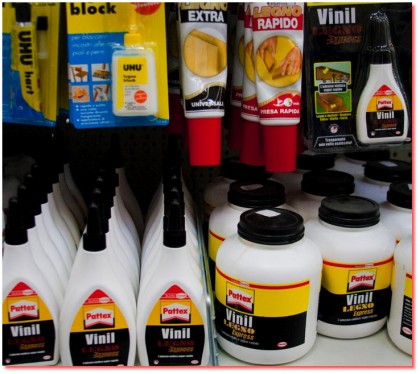 Floor space at Brico is devoted to garbage cans no bigger than my purse, and to jars for canning marmalade. We buy an olive tree for the tiny balcony and a rug made in Iran. Matinee idols deliver service with a smile (where are the Home Depot employees when you need them?). Floor space at Brico is devoted to garbage cans no bigger than my purse, and to jars for canning marmalade. We buy an olive tree for the tiny balcony and a rug made in Iran. Matinee idols deliver service with a smile (where are the Home Depot employees when you need them?).

At Home Depot you get boring batteries and drill bits at check-out. Here you get great pots of basil and fragrant mint.
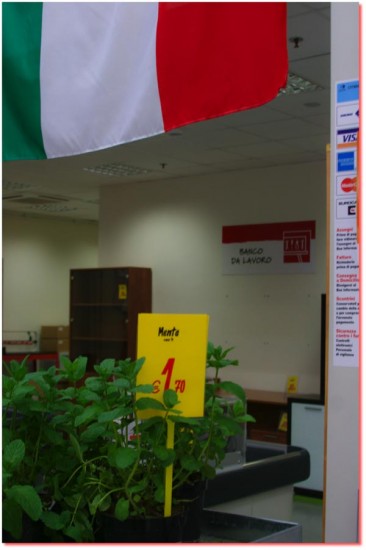
We agree that the best thing about Brico is the aromatic do-it-yourself coffee bar with mod Italian tables and chairs.

For forty cents you can get not only a delicious caffè espresso, but a caffè lungo, caffè macchiato, cappuccino, caffè corto decaffeinato, caffè macchiato decaffeinato, mocaccino, cappciocc (what’s that?) cappuccino decaffeinato, cioccolato forte, cioccolata al latte, latte, latte macchiato, latte al cacao, and te al limone. Plus at the press of a button you decide if you want the above dolce or amaro. It’s Starbucks (but much better) in a machine the size of a jukebox.
Can you beat that, Home Depot?
May 17, 2010
Doing the bathroom twice was not fun.
In the aftermath of Round One, I was tempted to give up and flee Sicily for good.
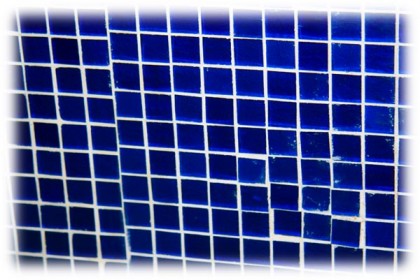 Results of Round One “You get no respect from your crew,” noted a friend. She persuaded a local bigwig to throw his weight around, Sicilian-style, as my proxy.
That did the trick.
Early one morning a new piastrellista, tile setter, showed up on my doorstep smelling of cologne and rubbing sleep from his eyes. He toiled away in a no-nonsense fashion, furiously attacking his predecessor’s work. Glass shattered kaleidoscopically.
“Io sistemo tutto,” he kept repeating. I systematize all. (Sistemare is one of the highest Italian virtues.)
To fuel his fury, I ran to the local bar for tiny cups of thick black coffee and sweet ricotta tarts.
Round Two produced an apple-green bathroom. The tiles are ceramic and plain—not the pricey designer ones of yore. But you know what? Good riddance to those fancy-pants glass tiles. I like the brighter cheap-o ones better.
 Results of Round Two I hate to trivialize Andre Gide’s words by using them in this mundane context, but I’ll do it anyway: “One does not discover new lands without consenting to lose sight of the shore for a very long time.”
Click to leave a comment.
Click to subscribe.
April 12, 2010

…
Into the cramped space under this arch—hardly big enough for a closet—I plan to stuff an entire bathroom: sink, toilet, shower, heat rack, mirror, towel racks. The project manager is insisting on a bidet (he says no Italian can live without one), but you’d have to put your foot in the bidet to squeeze into the shower.
This is part of the cantina, the old wine cellar that is slowly morphing into guest quarters.
I plan to expose as much stone as possible inside and above the arch. The back wall, which needs to be waterproof, will be a sea of tiny tiles. Tiles the blue of a storm-tossed Ionian Sea.
Beastly expensive tiles.
I knew nothing about the cost when I ordered. I didn’t bother to ask the price. I figured: they’re just tiles made right here in Italy, not some expensive import. How much could a few little tiles cost?
The boxes finally arrived from Milan, along with the bill. My eyes popped. I had to read it over and over. I could feel my face on fire.
“Well, you ordered glass tiles,” the project manager says. What did you expect?”
I did notice how lustrous they were, but I had no idea they were glass.
I thumb through the instruction manual that comes with the tiles. The installation looks complicated. “Are you sure the mason is up to this?” I ask the project manager. The mason seems to have perfected the art of banging and pounding, but I’ve never seen him do anything delicate with his thick, calloused hands. Do I trust him with my treasures? Has he ever installed anything of the sort?
“Non preoccuparti,” says the project manager, winking. Don’t worry.
This is the favorite phrase down here. It usually means trouble.
But who am I to argue?
***
..
Click to comment.
Click to subscribe.
March 30, 2010
Surprise! The 20th-century layers have been chipped off my walls, and I think we’ve found—in addition to big old blocks of Norman stone—some traces of Arab architecture.
North African Moors ruled Sicily for only a couple of centuries more than a millennium ago, but their influence on the island was, and is, huge.
Before I show you my little discovery, take a good look, if you will, at these keyhole-shaped doorways in North Africa.

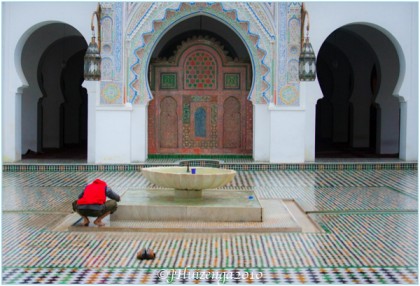
OK, now compare those doorways with the one below in my house. The arch shape turned up when we pulled off the modern wooden door frame. Don’t you think it looks vaguely Moorish in design?
 It’s not as beautiful as those North African doors, I know, and the curved thingamajig is way up top rather than in the middle of the arch, but still … it makes me wonder. It’s certainly not a pure Roman or Greek arch (more on that below). It’s not as beautiful as those North African doors, I know, and the curved thingamajig is way up top rather than in the middle of the arch, but still … it makes me wonder. It’s certainly not a pure Roman or Greek arch (more on that below).
I now have three of these vaguely Moorish arches on the top floor of my casa.
The house is a historical puzzle. The top floor, I’m quite sure, was built sometime soon after the 1693 earthquake that leveled not just Ragusa Ibla, but much of southeast Sicily. As I’ve mentioned earlier, the stone blocks in this doorway and elsewhere in the house were looted from the Norman castle that stood on this site and crumpled in that quake. (I know this only because neighbors have told me.)
So, assuming the above timeline, this means that 700 years after the Moors left Sicily, local Sicilian builders still carried traces of their Arab heritage in their builders’ DNA.
Everything here is so knotted and twisted together; it’s hard to tease out the many strands of history from all the superimposed cultures and styles. Layers upon layers—that’s what Sicily is all about.
The house becomes older the lower you go. The bottom floor used to be a cantina, a place where wine was made and stored (soon to be guest quarters). The arch down there seems Greco-Roman in style, an uninterrupted curve.
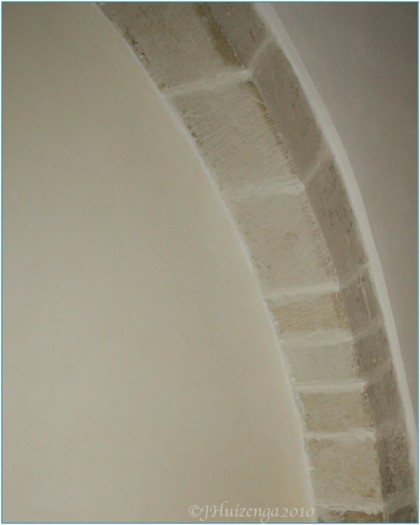
When was it constructed? Stay tuned. Maybe someday I’ll figure it out. Perhaps you have an insight?
***
For more on the Muslim rule of Sicily, click here.
***
Click to leave a comment.
Click to subscribe.
March 20, 2010
Chink chink. Whack whack. Hammers bounce off chisels. Lumps of plaster drop like overripe fruit exposing ancient stones, ghosts of centuries past.
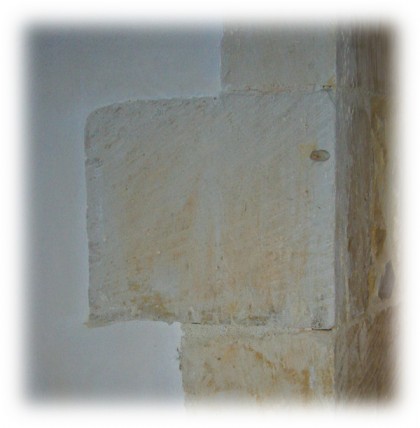
I’m giddy, over the moon. And look! A stone arch where an ugly closet used to be! I love going backward in time.

But like the Sicilian saying goes: Quantu cchiù autu è lu munti, tantu cchiù profunna è la valli, the higher the mountain, the deeper the valley.
Neighbors—a stocky elderly couple—knock at the door one day just after I’ve arrived back from Rome. “Signora, there’s a problema.” They seem agitated. “Come see.”
I follow them up a flight of steps into their home. The houses in Ragusa Ibla are fitted together like jigsaw pieces; neighbors live over me, under me, to the right and to the left. The couple waves arms around and jabbers in sync. What in God’s name are they pointing at?
When my eyes adjust to the semi-darkness, I see what must be dozens of cracks like spider legs crawling over the walls. Bad news indeed, but what do these blessed spider legs have to do with me?
“Signora, all the pounding away in your house has ruined our walls.”
For a minute the room lacks oxygen. Are these cracks really new? Sicily is on a fault line. This could have happened years ago. I want to bring up these ideas, but of course I don’t. Instead I say in a voice sharp as a prickly pear, “Let me speak to the project manager. We’ll resolve this.”
Things are getting tangled up. Cu’ havi terra, havi guerra, Sicilians say, owning land is like fighting a war.
What will this cost? I’m hemoragging cash. The dollar is at an all-time low. I consult with Sicilians in the know.
Mason: No way we could we have done that. Impossibile. You’d be a fool to pay a centesimo.
Friend 1: Sicilians see Americans as a giant slot machine. Don’t pay.
Project Manager: It’s possible we did cause the cracks. We’ll never know. Pay up. Keep the peace.
Friend 2: It’s extortion, pure and simple.

Have they typecast me? The lady with the American dollars? Have I destroyed their walls? Do I now have two houses to restore? What to do?
Click here to comment.
|
Subscribe to Baroque Sicily
Copyright reserved -
All photos and text on BaroqueSicily are Copyright of Jann Huizenga ©2009-2015, unless otherwise noted. Material may not be copied or re-published without written permission. All rights reserved.
|
 We finally escape the hot fingers of the sun into cool Brico-dom. Kim marvels at the dainty shopping baskets, wondering where all the flatbed carts are.
We finally escape the hot fingers of the sun into cool Brico-dom. Kim marvels at the dainty shopping baskets, wondering where all the flatbed carts are.
 Floor space at Brico is devoted to garbage cans no bigger than my purse, and to jars for canning marmalade. We buy an olive tree for the tiny balcony and a rug made in Iran. Matinee idols deliver service with a smile (where are the Home Depot employees when you need them?).
Floor space at Brico is devoted to garbage cans no bigger than my purse, and to jars for canning marmalade. We buy an olive tree for the tiny balcony and a rug made in Iran. Matinee idols deliver service with a smile (where are the Home Depot employees when you need them?).







 It’s not as beautiful as those North African doors, I know, and the curved thingamajig is way up top rather than in the middle of the arch, but still … it makes me wonder. It’s certainly not a pure Roman or Greek arch (more on that below).
It’s not as beautiful as those North African doors, I know, and the curved thingamajig is way up top rather than in the middle of the arch, but still … it makes me wonder. It’s certainly not a pure Roman or Greek arch (more on that below).



